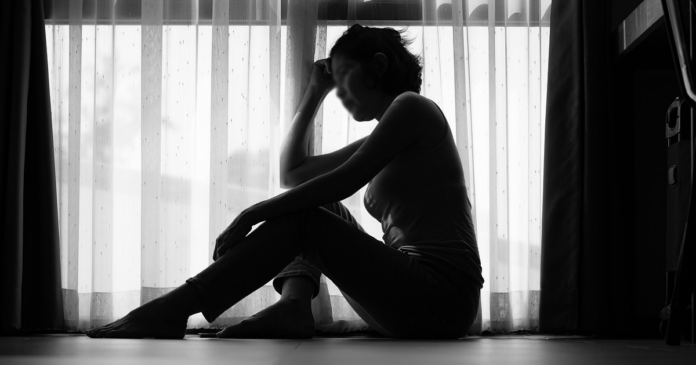The arrest of Fr. Arul Savari, a 48-year-old priest accused of sexually assaulting an eight-year-old girl at a Roman Catholic church on the Little Grand Rapids Indian Reserve 265 kilometres northeast of Winnipeg on May 27 has provoked a local demand that the church leave the community.
The child was alone with the priest, who was charged with sexual assault, sexual interference, sexual exploitation of a young person, luring a child and forcible confinement on May 30.
“We don’t want the church here,” Oliver Owen, the reserve’s chief announced to media.
“I brought that up to the band meeting about our priest and the community right away said, ‘you know what, we don’t want that person here in the community, we don’t want him to come back and we don’t want the church here,'” Owen said in a phone interview with the CBC.
“It’s hard to imagine. I’m kind of lost for words,” Owen said.

In a statement Tuesday, Southern Chiefs’ Organization Grand Chief Jerry Daniels said they stand with the girl who was harmed.
“First Nations have sadly experienced predatory behaviour for generations when it comes to the churches,” Daniels said in a news release. “The leaders of the Catholic church have much work to do in repairing relationships with our nations.”
The same sentiments were expressed on June 1 by Niigaan Sinclair, an Anishinaabe Winnipeg Free Press columnist and a professor of indigenous studies at the University of Manitoba.
“It’s well known that the Catholic Church has a history of sending abusive employees to First Nations communities.
“There are, literally, thousands of arguments [read: abusive priests] to support banning the Catholic Church from First Nations communities. Most begin with the history of violence.
“Last fall, APTN [Aboriginal Peoples Television Network] Investigates released a report showing that 82 priests, nuns and other church employees had been named in 146 lawsuits throughout the 1990s and 2000s, alleging physical and sexual harm at eight Catholic-run residential schools in Manitoba.
“The problem, as in most abuse cases, is survivors aren’t believed or, by the time they are, evidence is so old survivor accounts are difficult to corroborate.
“The point here is that there is clearly an ongoing systemic problem with the Catholic Church sending sexual predators and abusers to Indigenous communities.”
None of these assertions has much credibility.
The Archdiocese of St. Boniface, the body responsible for Fr. Savari’s appointment, immediately suspended Fr. Arul Savari from all ministerial activity:
“Fr. Savari has been forbidden to have anything to do with former parishioners and children,” the church said.
This is not to doubt that the sexual abuse of children under the age of consent has long been a problem for the Catholic Church with up to four percent of priests having been accused of this serious crime. Still, this rate seems not out of line with such assaults in the larger society or among other clergy or members of other professions.
And there is no evidence that the Archdiocese suspected that Savari had a history of paedophilic sexual exploitation.
Nor is there any evidence that Catholic priests in Canada believed to be molesting the children under their supervision or care are still routinely transferred elsewhere, a practice said to have been common in the past.
But as horrific as these acts have been, they need to be contextualized.
For example, the APTN Investigates story Sinclair mentions revealed that most of the lawsuits were abandoned once the Indian Residential Schools Settlement Agreement was finalized, presumably because that 2007 agreement allowed those claiming abuse to be exempted from rigorous verification and vigorous cross examination.
Contrary to Sinclair’s assertion, the non-adversarial nature of the Independent Assessment Process meant that survivors were believed even when their accounts were difficult to corroborate.
It has been crudely estimated that 5,000 people committed a sex crime at an Indian Residential School during the system’s 113-year government-controlled existence. But fewer than 50 have been convicted, only a few of them priests. The rest, 4,950 people, few of them clergy, must be considered innocent based on that presumption unless proven guilty.
Most important of all is the comparative context: weighing the difference between sexual abuse by priests and by other indigenous people.
In this regard, Chief Owen must have a very short memory if he actually believes “It’s hard to imagine” the reputed abuse of this little girl.
On October 21, 2021, his predecessor, Chief Raymond Keeper, 65, was arrested and charged with luring a person under 18, two counts of sexual assault, sexual assault with a weapon, and touching for a sexual purpose while in a position of authority.

At the time of his arrest, RCMP said they believe there may be more victims than this young girl.
As of March 7, 2022, RCMP confirmed no further charges have been laid, but indicated the investigation has progressed and new interviews have taken place.
Band residents said they believe Keeper is still residing in the community and there is no indication that the reserve is trying to have him exiled as is their legal right under Band Council Resolution provisions.
This is not only an indication of a double sexual-abuse standard between different Canadian ethnic groups but a window into the commonplace occurrence of indigenous sexual abuse.
As for an associated mainstream media double standard, a Google search of indigenous sexual abuse yields dozens about Fr. Savari and a meagre handful about ex-Chief Keeper, none for the past 14 months.
Could this be because intra-indigenous sexual exploitation is so prevalent that it is hardly newsworthy?
This seems plausible given other anecdotal evidence and overall statistics.
Nahanni Fontaine, a member of the Sagkeeng Anishnaabe Indian Band and an NDP member of the Manitoba provincial legislature, says she was just five when she was sexually abused for the first time.
At the age of eight, Fontaine remembers waking up with her knees up and her panties down after family members built a place for her to sleep on the floor while guests were over.
She recalls a drunken guest pushing her body onto a bed on the floor, pulling down her underwear and performing oral sex.
Fontaine — a long-time advocate for missing and murdered indigenous women —says her story is far from an isolated case: she knows very few indigenous women who haven’t gone through a similar experience.
Even if she is exaggerating and only 60% of indigenous women have been physically or sexually assaulted at some point in their lives, as Statistics Canada data show, this would represent some 740,000 indigenous females 15 years of age and older compared to a little over four in 10 non-indigenous women.
If he is found guilty, Fr. Savari should be severely punished for his wicked crime. But he and his church should not by scapegoated for intra-group adversities and pathologies that are so out of control among indigenous people themselves.
The signing of apartheid-like treaties and the creation of the separatist Indian Act during the late 19th century surely retarded the absorption of Western European beliefs, values, and practices have made the first settlers of Canada whose cultures were permanently transformed by colonialism worse off than they might otherwise be judging from the social, and economic, health differentials between Indigenous people and other Canadians.
Placed in a comparative national context, these show that indigenous people on and off reserve exhibit: the highest rates of criminal behaviour and incarceration; the lowest incomes; and the highest rates of unemployment, non-working population numbers, poverty, welfare dependency, and homelessness; the poorest housing; the highest rates of infant mortality; the lowest life expectancy; the highest disease and illness rates; the highest school dropout rates; the highest rates of child apprehension, fostering, and adoption; the highest levels of suicide; the highest rates of sexual abuse; the highest rates of single motherhood; and the highest rates of murdered and missing women.
Both on and off-reserve, female-headed, single-parent households whose children, usually the offspring of multiple fathers, are an open invitation for sexual abuse by revolving door stepfathers.
And given these tragic adversities and pathologies, now exacerbated by the hopelessness created by generations of welfare dependency, if “There are, literally, thousands of arguments [sexually abusive priests] to support banning the Catholic Church from First Nations communities,” as Sinclair claims, there are far better grounds for banishing tens of thousands of abusive and sexually predatory indigenous men as well.





















